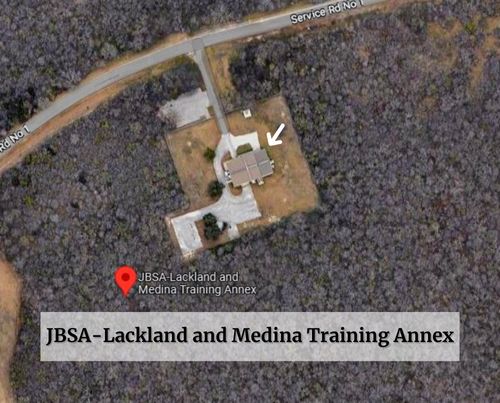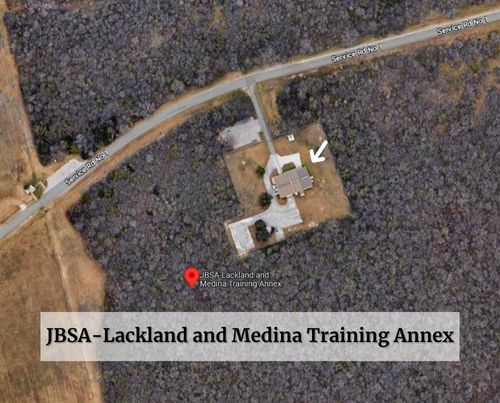
JBSA- Lackland and Medina Training Annex, formerly called Medina Base, is located at Lackland AFB in San Antonio, Texas, originally an NSS or National Stockpile Site constructed between the years 1953 and 1955. At Medina Base, they built a Modification Center in 1959 for disassembling firearms or weapons; at that time, storage operation was stopped.
On the 13th of November 1903, a big chemical blast involving parts from out-of-date or old-fashioned weapons that were being detached. The substance explosive exploded with a pressure corresponding to over 60 tons of TNT. And there was slight contagion coming from the nuclear substances stored in a different place of the building. Harms were minor to people inside the building, and nearby work areas weren’t harmed or damaged. The modification or disassembly work was moved in 1965 to Pantex from Medina. Check This URL
The SFC, or Security Forces Center, transferred to Lackland’s Medina Annex from Kirtland AFV in 1997. On the other hand, in 1993, OTS, or Air Force Officer Training School, transferred to Maxwell AFB, coming from the Annex. The “quality of life” signpost of the Air Force arrived at Lackland’s Medina Training Annex in the first quarter of 2000 after the latest Frank Tejeda Estates, a privatized housing project of the Air Force was revealed. The project was named in respect to Frank Tejeda, the late Congressman of Texas who offered houses for E-3 throughout E-7 enlisted constituents and their loved ones assigned to the area.
It‘s the primary housing privatization plan of the Air Force, with the application of Alternative Authority for Acquisition and Improvement of Military Housing passed and endorsed by the NDAA or National Defense Authorization Act of 1996. Lease for these housing units is restricted to the basic grant for housing for individual E-3 all the way through E-7 constituents. Landmark Organization of Austin designed, developed, and owns, ran, and managed the new leasing housing development.
Gateway to the Air Force of Lackland AFB is situated on the southwestern border of San Antonio- this city is named Lone Star State’s cultural mecca. Lackland encompasses about 7,000 acres. It is secluded into three main parts of two roads. One of the state’s most exceptional annoyances is fire ants. Useful Content
At this point, Lackland AFB subsists with the thirty-seventh Training Wing, which serves as installation command host, bordered by the biggest occupant, the 59th Medical Wing. The main mission of Lackland is to give training for non-prior members of the Air Force and Air Force Reserve, as well as the Air National Guard, and offer modern and contemporary operations exercises in the cryptographic tool maintenance field, law enforcement, safety, combat arms, military dog handler, supply, recruiting, transportation, services, social action, as well as dietary. Lackland also offers students from many countries the chance to augment their ability and skills in understanding and speaking English at Defense Language Institute English Language Center.
Established on the 26th of June, 1942, Lackland Air Force Base, whilst the War Department alienated a portion of Kelly Field and called SAACC or San Antonio Aviation Cadet Center to back the war endeavors. From its beginning, SAACC witnessed fast development and changed from a previous field of training as well as a bombing range in an array of missions; to a place for flying exercises, a hub for the commissioning orientation and office training, a staging place for veterans going back to WWII for separation or reassignment, and finally, set up as the basic military exercise hub for officers as well as enlisted personnel coming into the Army Air Forces.
Lackland was established as a unified training base. It was sanctified training developed to help t Air Force Mission. The commissioning programs and basic training enthused Air Force pride. They established a technical training cluster to manage the different courses today taught at the base.
The Vietnam and Korean Wars seriously tested the capacity of the Lackland to train fresh recruits and meet mobility demands. In the 1950s, training populations went up to almost 55,000 with just an utmost capacity of 25,000. The rapidly developed wooden structures were developed in 1941 to integrate the MOB or Mobilization Open Bay dormitories.
During Vietnam, inventive leaders divided training schedules, improved flight sizes, as well as compressed exercise from thirty to twenty-four days to meet the necessity for military promptness. Also, the training requirements expanded to take into account teaching the English language to allied members of the military from foreign nations.
As an outcome of the incidents of the construction of stable facilities, to take into account the 1, individual steel and block RH&T or Recruit Housing and Training facilities for military training paved Lackland’s training accountabilities. Desert Storm revalidated the training value in the 1990s.
In 1992, this training center celebrated its 50th anniversary and, at the same time, welcomed IAAFA and its exercise goal in the ravaging aftermath of storm Andrew. In 1993, Air Education and Training Command emerged under the reorganization of the Air Force and transferred OTS to Maxwell AFB.
Important Details to Remember
- Location: Patrol Rd San Antonio, TX 78227
- Website: https://www.google.com/maps/place/JBSA-Lackland+and+Medina+Training+Annex,+Patrol+Rd,+San+Antonio,+TX+78227/@29.3698405,-98.6842909,14z/data=!3m1!4b1!4m5!3m4!1s0x865c44d5e52358cf:0xb751a86f4aacce85!8m2!3d29.3736976!4d-98.6655592?hl=en


